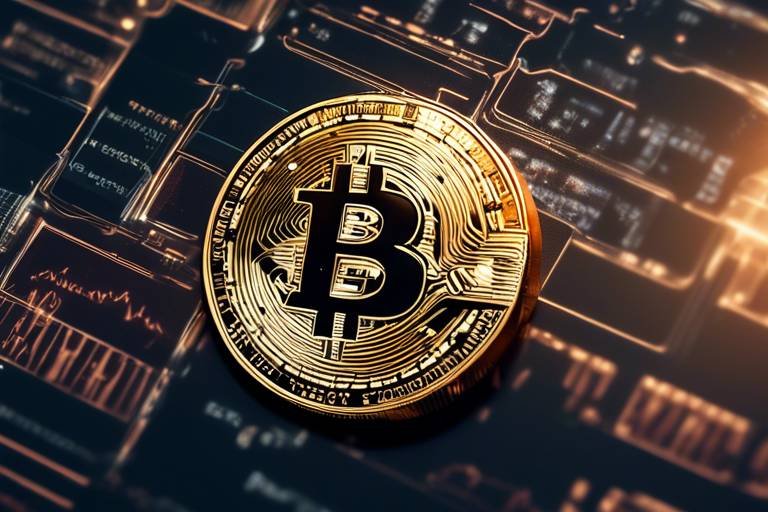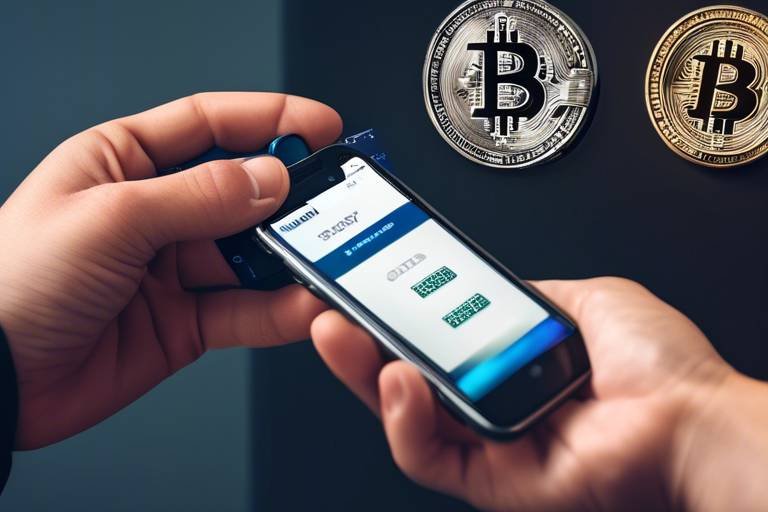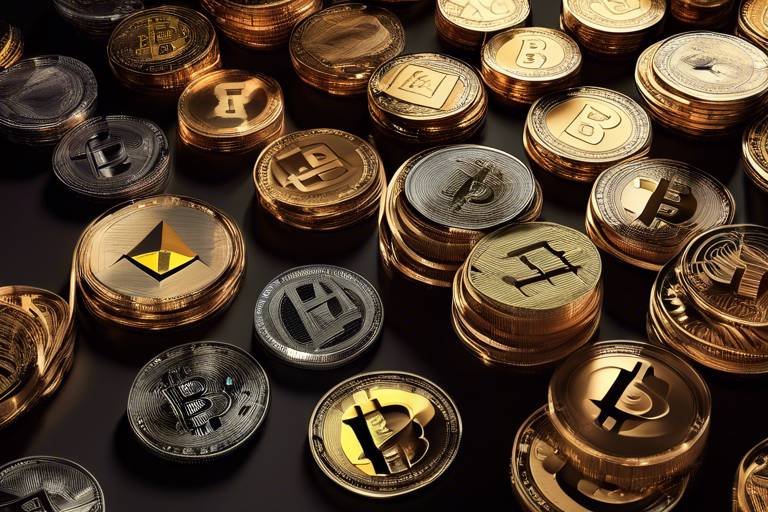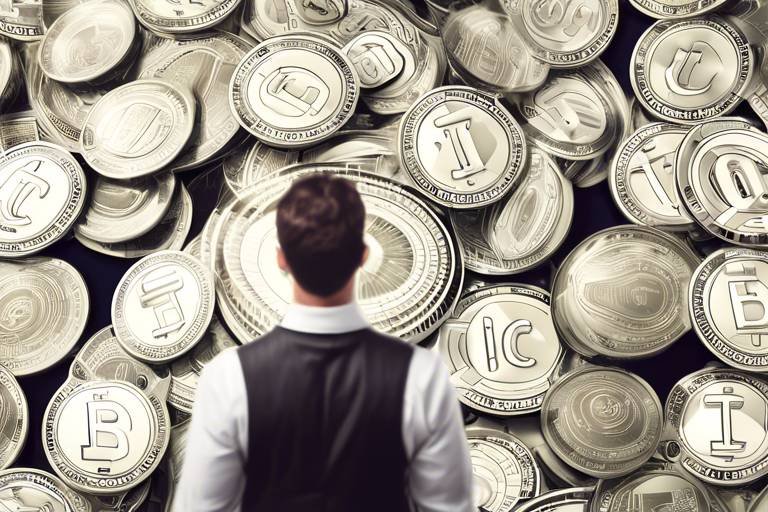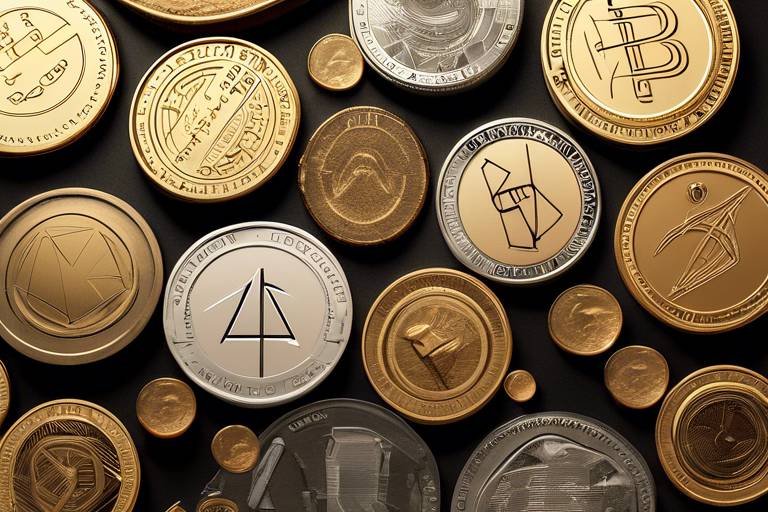Exploring the Impact of Tokenomics on Crypto Projects
In the ever-evolving world of cryptocurrency, tokenomics has emerged as a critical factor that can make or break a project. But what exactly is tokenomics? At its core, it encompasses the economic model that underpins a cryptocurrency, influencing everything from its supply and distribution to the incentives that drive user engagement. Just like a well-crafted recipe, the right mix of ingredients can lead to a delicious dish—or in this case, a successful crypto project. This article delves deep into the essential role of tokenomics, examining its various components and their implications for both investors and developers alike.
Imagine tokenomics as the blueprint of a skyscraper; without a solid foundation, the entire structure could crumble. This foundational element not only dictates how a cryptocurrency operates but also shapes investor confidence and market behavior. When designed effectively, tokenomics can create a sustainable ecosystem that encourages participation and rewards stakeholders. Conversely, poorly designed tokenomics can lead to chaos, resulting in a lack of trust and eventual project failure. Thus, understanding tokenomics is not just for developers; it’s vital for investors who want to make informed decisions in a volatile market.
Tokenomics refers to the intricate economic model behind a cryptocurrency, encompassing its supply, distribution, and the incentives that drive user participation. It’s a blend of economics, game theory, and psychology, all wrapped up in one. The significance of tokenomics in the broader crypto ecosystem cannot be overstated. It dictates how tokens are allocated, what motivates users to hold or trade them, and how the overall project can sustain itself in the long run. Think of it as the lifeblood of a cryptocurrency—without it, the project risks stagnation or even collapse.
One of the most fascinating aspects of tokenomics is how it interacts with the forces of supply and demand. Just like in traditional markets, these dynamics play a crucial role in determining a token's value. If a project has a limited supply but high demand, the token’s price is likely to skyrocket. Conversely, if there’s an oversupply with little demand, prices may plummet. Understanding these principles can help investors gauge potential investment opportunities and risks.
Supply and demand dynamics are not just economic jargon; they are the heartbeat of any cryptocurrency's market behavior. When a new token is introduced, its initial supply and the way it is distributed can significantly impact its perceived value. For instance, if a project decides to release a large number of tokens all at once, it may flood the market, leading to decreased demand and a subsequent drop in price. On the other hand, a carefully planned release can create scarcity, driving up demand and value.
Different mechanisms exist to manage token supply, including:
- Fixed Supply: A predetermined number of tokens are created, ensuring scarcity.
- Inflationary Models: New tokens are continuously minted, often to reward participants.
- Deflationary Models: Tokens are periodically removed from circulation, enhancing value.
Each of these approaches has its implications for project longevity and investor confidence. For example, a fixed supply might attract investors looking for scarcity, while an inflationary model could appeal to those interested in ongoing rewards. Understanding these nuances can empower investors to make choices aligned with their financial goals.
When it comes to inflationary versus deflationary tokens, the contrast is stark. Inflationary tokens can lead to a dilution of value over time, which might deter long-term holders. In contrast, deflationary tokens are designed to appreciate in value as supply decreases, often leading to increased user engagement and loyalty. For investors, recognizing these differences is crucial in assessing potential risks and rewards associated with various projects.
Token burn strategies are another fascinating aspect of tokenomics. By intentionally reducing the total supply of tokens, projects can create a sense of scarcity that may drive up demand and value. For instance, a project might implement a mechanism where a percentage of transaction fees is used to buy back and burn tokens. This strategy not only enhances the token's value but also instills confidence among investors, as it demonstrates a commitment to maintaining a healthy ecosystem.
Incentives play a vital role in tokenomics, acting as the glue that holds the community together and drives project growth. Various incentive structures, such as staking rewards, governance participation, and liquidity mining, can significantly enhance user engagement. The more value users derive from participating in a project, the more likely they are to remain loyal. This creates a virtuous cycle where increased participation leads to greater value, attracting new users and investors alike.
Real-world examples of successful tokenomics provide valuable insights into what works and what doesn’t. For instance, Ethereum’s gas fee structure is a prime example of tokenomics in action. Gas fees are paid to miners to process transactions, and this system not only incentivizes miners but also regulates network usage. Similarly, Binance Smart Chain showcases a unique token model that has attracted numerous projects, contributing to its rapid growth. Analyzing these case studies can offer lessons that aspiring projects can implement to achieve their goals.
Despite its potential, tokenomics is not without challenges. Common pitfalls include over-inflation of tokens, lack of transparency in distribution, and failure to adapt to changing market conditions. These issues can undermine the effectiveness of token models, leading to a loss of trust from investors and users alike. It’s essential for projects to continuously evaluate their tokenomics and make adjustments as needed to ensure long-term sustainability.
What is tokenomics?
Tokenomics refers to the economic model behind a cryptocurrency, including its supply, distribution, and incentives that drive user engagement.
Why is tokenomics important?
Tokenomics is crucial because it shapes the sustainability and growth of a cryptocurrency project, influencing investor confidence and market behavior.
What are the different token supply mechanisms?
Token supply mechanisms include fixed supply, inflationary models, and deflationary models, each with unique implications for project longevity and investor confidence.
How do incentive structures work in tokenomics?
Incentive structures encourage user participation and loyalty, often through rewards like staking, governance participation, and liquidity mining.
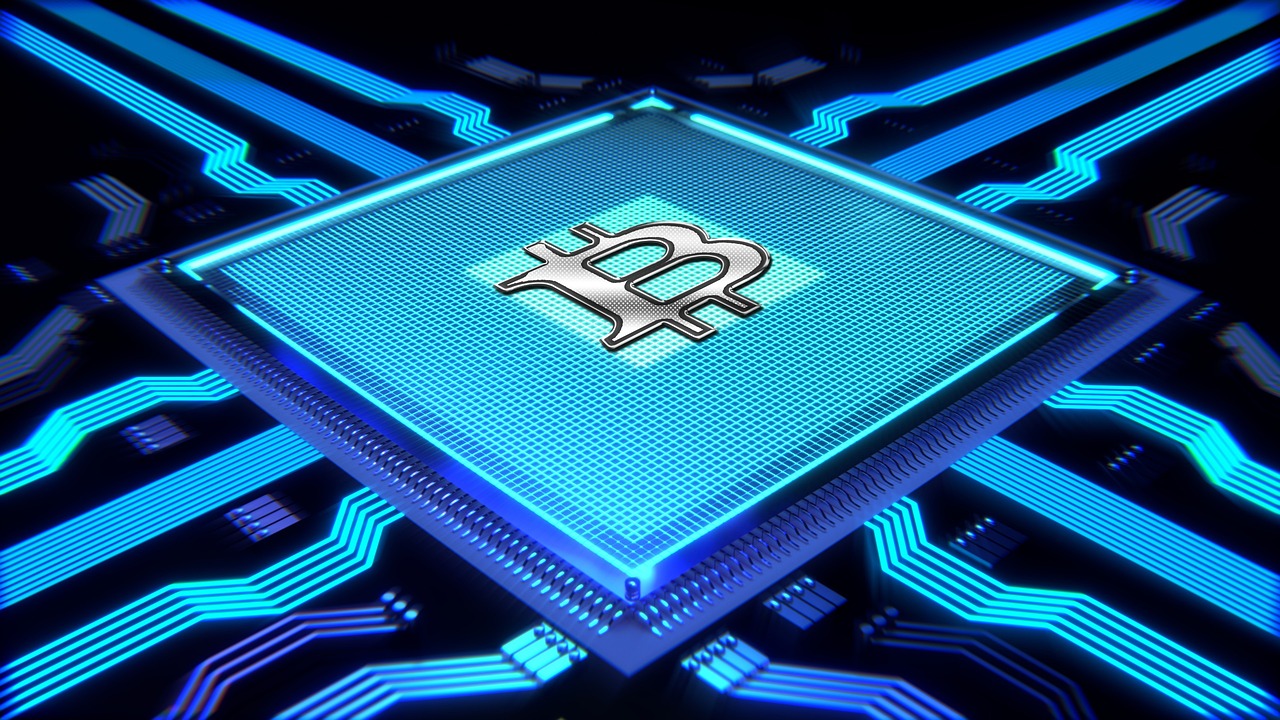
Understanding Tokenomics
Tokenomics is a fascinating blend of economics and token design that forms the backbone of any cryptocurrency project. At its core, tokenomics encompasses the various aspects that determine how a token operates within its ecosystem. This includes its total supply, distribution methods, and the incentives provided to users and investors. Think of it as the blueprint that guides the creation and sustainability of a digital currency. Without a solid understanding of tokenomics, both developers and investors can find themselves navigating a complex landscape filled with potential pitfalls.
One of the most critical elements of tokenomics is the token supply. This refers to the total number of tokens that will ever exist, which can significantly impact the token's value. For instance, a project with a fixed supply might create a sense of scarcity, driving demand as more people want to own a piece of the limited supply. On the other hand, projects with inflationary models can lead to a dilution of value over time, as more tokens are minted and introduced into circulation. Understanding these dynamics is essential for anyone looking to invest in or develop a cryptocurrency.
Furthermore, the distribution model of tokens plays a vital role in shaping the project's community and its overall success. Tokens can be distributed through various methods, such as initial coin offerings (ICOs), airdrops, or staking rewards. Each method has its implications for how tokens are perceived by the community. For example, a well-structured ICO can generate significant interest and investment, while poorly managed airdrops may lead to a lack of engagement and trust.
Incentives are another crucial component of tokenomics. They are designed to encourage specific behaviors within the ecosystem, such as holding tokens, participating in governance, or providing liquidity. These incentives can take many forms, including staking rewards, discounts on fees, or even exclusive access to certain features or products. By aligning the interests of users and the project, effective incentive structures can foster a vibrant and engaged community, which is often the lifeblood of any successful cryptocurrency.
To summarize, tokenomics is not just a buzzword; it is an essential framework that can determine the success or failure of a cryptocurrency project. By understanding the intricacies of supply, distribution, and incentives, both developers and investors can make informed decisions that align with their goals. The world of crypto is vast and ever-changing, but a solid grasp of tokenomics can help you navigate it with confidence.

The Role of Supply and Demand
When diving into the world of cryptocurrencies, understanding the role of supply and demand is like peering into the heart of a living organism. Just as our body needs a balance of nutrients to thrive, the crypto market relies on these fundamental economic principles to determine the value of a token. Imagine a seesaw: on one side, you have supply, and on the other, demand. If one side outweighs the other, the balance is disrupted, leading to fluctuations in price and market behavior.
At its core, the dynamics of supply and demand dictate how much of a token is available in the market and how much investors are willing to pay for it. When demand outstrips supply, prices tend to soar, creating a sense of urgency among buyers. Conversely, when supply exceeds demand, prices can plummet, leaving investors scrambling for answers. This interplay is crucial for both developers and investors, as it sets the stage for potential growth or decline.
To illustrate this further, consider the following table that outlines the key factors influencing supply and demand in the crypto space:
| Factor | Impact on Supply | Impact on Demand |
|---|---|---|
| Market Sentiment | Can increase supply if holders sell off | Can drive demand up during bullish trends |
| Token Utility | More use cases can limit supply | Increased utility typically boosts demand |
| Regulatory News | Can impact supply through compliance requirements | Positive news can lead to increased demand |
Understanding these factors can help investors make informed decisions. For example, if a new project launches with a limited supply of tokens, it may create a buzz and attract buyers eager to invest early. On the flip side, if a project announces a large token release, it could lead to a sell-off as investors fear dilution of their holdings.
Moreover, the tokenomics of a project often includes mechanisms to manage supply, such as vesting schedules for team tokens or lock-up periods for early investors. These strategies can help stabilize the market by preventing sudden influxes of tokens that could disrupt supply-demand dynamics.
In summary, the role of supply and demand in tokenomics cannot be overstated. It shapes the market landscape, influences investor behavior, and ultimately determines the success of a cryptocurrency project. As you navigate the ever-changing waters of the crypto market, keeping an eye on these dynamics can provide valuable insights into potential opportunities and risks.
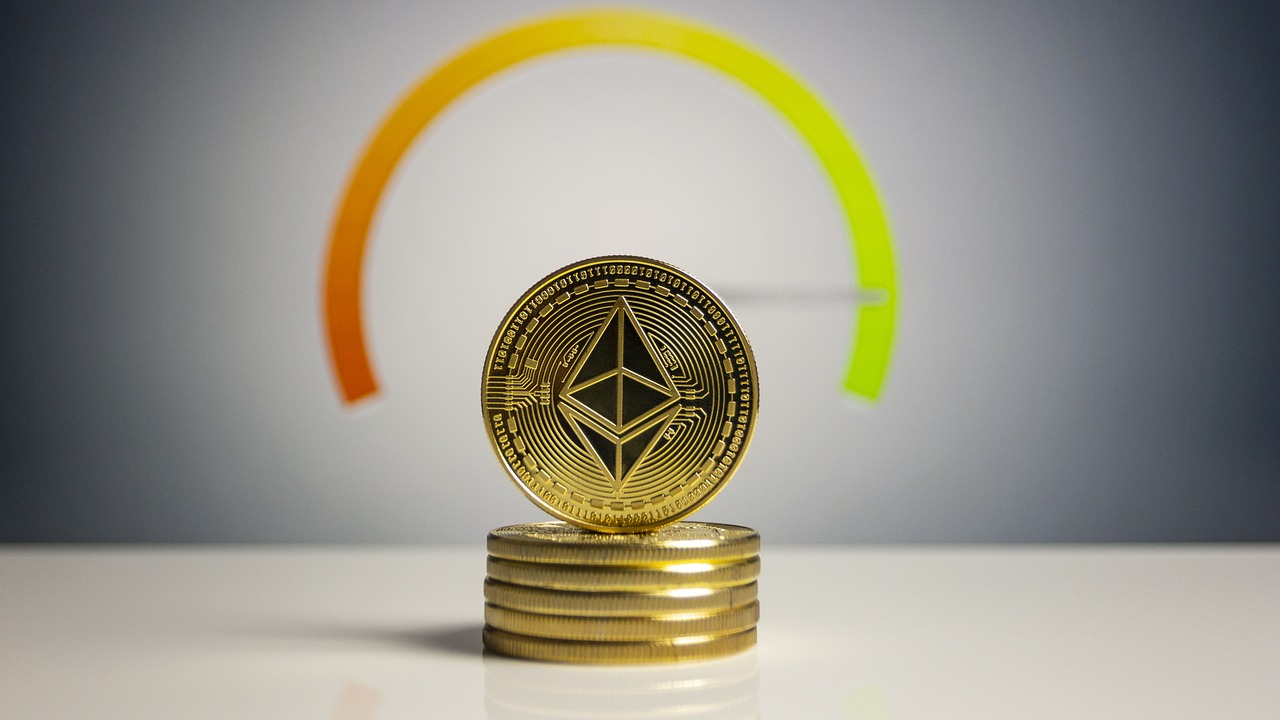
Token Supply Mechanisms
When diving into the world of cryptocurrency, one cannot overlook the concept of . These mechanisms are the backbone of how a cryptocurrency operates, influencing everything from its value to its long-term viability. Essentially, they determine how many tokens will be available, how they are distributed, and how they can be utilized within the ecosystem. Understanding these mechanisms is crucial for both developers and investors, as they directly impact market dynamics and user engagement.
There are three primary types of token supply mechanisms that projects typically utilize: fixed supply, inflationary models, and deflationary models. Each of these approaches comes with its own set of advantages and challenges, shaping the overall landscape of a project.
Fixed supply tokens are like a limited edition collectible—once they're gone, they're gone. This model creates scarcity, which can drive demand and increase value as more people want a piece of the pie. Think of Bitcoin, which has a capped supply of 21 million coins. This scarcity is a significant factor in its allure and market behavior. However, while a fixed supply can create value, it can also lead to volatility, as the token's price may swing dramatically based on market sentiment and demand.
On the other hand, inflationary models introduce new tokens into circulation over time, often to incentivize participation and growth. This model can be likened to a garden where new plants (tokens) are continuously nurtured to keep the ecosystem thriving. For instance, Ethereum initially had an inflationary model that rewarded miners for validating transactions. This approach can help maintain liquidity and encourage users to engage with the platform, but it also risks diluting the value of existing tokens if not managed carefully.
In contrast, deflationary models aim to reduce the total supply of tokens over time, often through mechanisms like token burns. This can be seen as a way of trimming the excess from a garden, ensuring that the remaining plants (tokens) have more room to grow. By intentionally decreasing supply, projects can create upward pressure on token prices, benefiting holders. However, if not executed properly, deflationary strategies can lead to uncertainty and fear among investors, impacting their willingness to engage with the project.
To illustrate the differences between these mechanisms, let’s take a closer look at the implications of each:
| Token Supply Mechanism | Characteristics | Implications |
|---|---|---|
| Fixed Supply | Limited number of tokens available | Creates scarcity; potential for high value but can lead to volatility |
| Inflationary Model | New tokens are continuously created | Encourages growth and liquidity; risk of value dilution |
| Deflationary Model | Tokens are removed from circulation | Can increase value over time; requires careful management to avoid panic |
Ultimately, the choice of token supply mechanism is a critical decision for any cryptocurrency project. It shapes not only the economic model but also the community's engagement level and the overall perception of the token in the marketplace. Developers must carefully consider the long-term implications of their chosen model, balancing the need for growth with the importance of maintaining investor confidence.
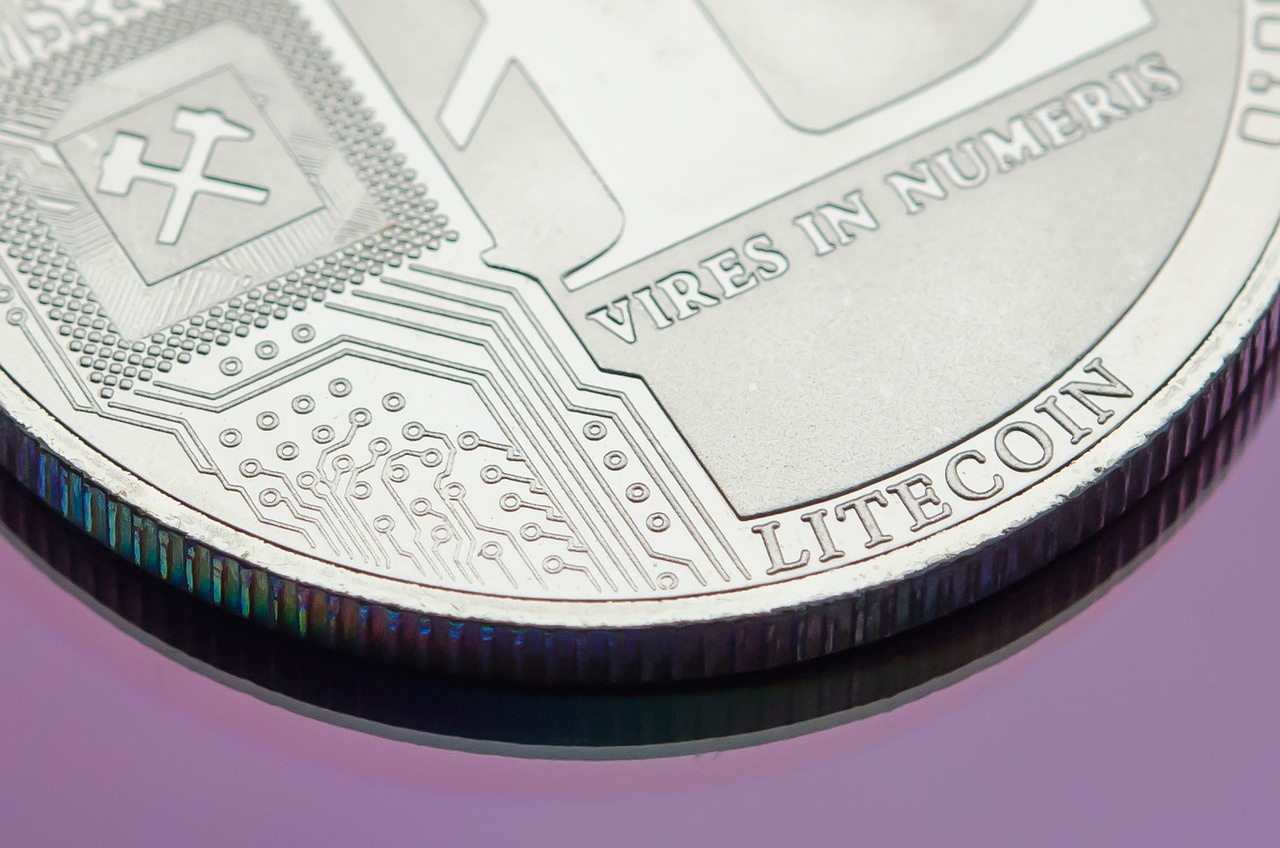
Inflationary vs. Deflationary Tokens
The world of cryptocurrency is fascinating, and one of the most intriguing aspects is the concept of inflationary and deflationary tokens. Understanding these two types of tokens is crucial for investors who want to navigate the ever-evolving crypto landscape. So, what exactly do we mean by inflationary and deflationary tokens? Let's break it down.
Inflationary tokens are designed to increase in supply over time. This means that as more tokens are created, the total supply grows, which can dilute the value of each individual token. Think of it like a balloon: the more air you pump into it, the larger it gets, but the surface area becomes thinner. In the crypto world, this can lead to a decrease in value if demand doesn’t keep pace with the increasing supply. A classic example of an inflationary token is Bitcoin Cash (BCH), which has a predetermined inflation rate that decreases over time, but still adds to the total supply.
On the other hand, deflationary tokens operate on the opposite principle. These tokens have mechanisms in place to reduce the total supply over time. This can be achieved through various strategies, such as token burns, where a portion of the tokens is permanently removed from circulation. Imagine a limited edition collectible; as fewer items are available, the value often increases due to scarcity. A well-known example of a deflationary token is Binance Coin (BNB), which employs a burn mechanism to decrease supply periodically, thereby potentially increasing the token's value as demand rises.
But how do these two types of tokens impact investors? The answer lies in understanding their respective risks and rewards. Inflationary tokens might offer short-term gains if demand spikes, but they also carry the risk of long-term devaluation. Conversely, deflationary tokens can be more appealing for long-term holding due to their scarcity, but they may also experience volatility as market forces fluctuate.
To summarize, both inflationary and deflationary tokens have their unique characteristics and implications for investors. It's essential to consider factors such as market demand, the project's goals, and the overall economic environment when evaluating these tokens. By understanding the differences, investors can make more informed decisions that align with their financial strategies.
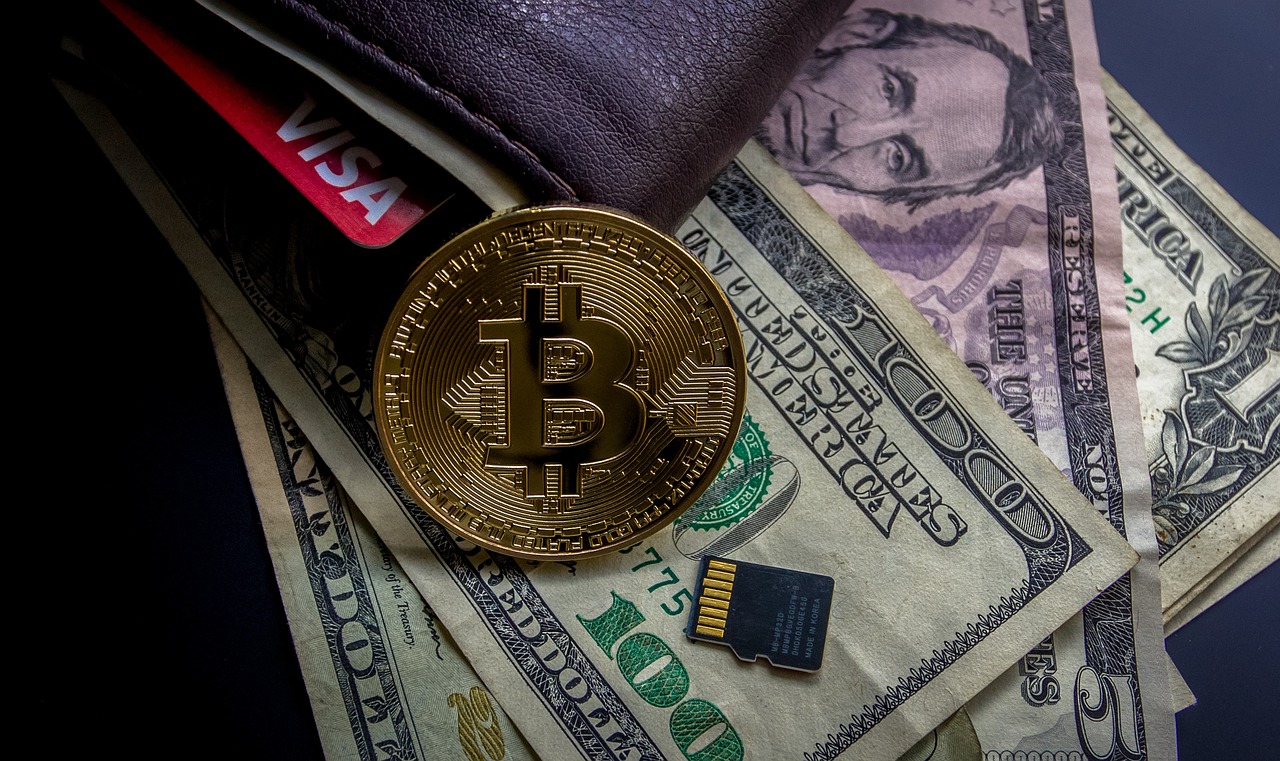
Token Burn Strategies
Token burn strategies are fascinating mechanisms employed by cryptocurrency projects to manage supply and potentially enhance the value of their tokens. Imagine a scenario where a limited edition collectible is released, and as time goes on, the creator decides to destroy some of those collectibles to increase scarcity. This is essentially what token burning does—it reduces the total supply of tokens in circulation, which can create a sense of urgency and demand among investors. The underlying idea is simple: by decreasing the supply, you can increase the value of the remaining tokens, making them more attractive to holders and potential buyers.
There are several methods by which token burns can be executed. One common approach is the scheduled burn, where a project commits to burning a specific amount of tokens at regular intervals. This method provides transparency and predictability, allowing investors to anticipate changes in supply. For instance, a project might announce that it will burn 1% of its total supply every quarter. This not only keeps the community engaged but also fosters a sense of trust, as stakeholders can clearly see the project’s commitment to maintaining token value.
Another popular strategy is the transaction-based burn, where a portion of tokens is burned with each transaction. This method can create a continuous deflationary effect, as the total supply decreases with every trade. For example, if a project implements a 2% burn on every transaction, over time, the circulating supply will diminish significantly, potentially leading to increased demand for the remaining tokens. This strategy not only encourages users to hold their tokens but also incentivizes them to participate in transactions, knowing that each trade contributes to the overall scarcity of the asset.
However, while token burn strategies can be effective, they are not without risks. If not executed correctly, they can lead to negative market perceptions. For instance, if a project burns too many tokens too quickly, it might create panic among investors, leading to a sell-off. Additionally, transparency is key; if the community feels that burns are being manipulated or are not being communicated properly, it can erode trust. Thus, it’s crucial for projects to maintain open lines of communication and provide regular updates on their burning strategies.
In conclusion, token burn strategies can serve as a powerful tool in a project's tokenomics arsenal. They not only help manage supply but also create a narrative that can attract investors. By carefully implementing these strategies and maintaining transparency, projects can enhance their attractiveness and foster a robust community. Ultimately, the success of token burn strategies hinges on their thoughtful execution and the ongoing engagement of the community.
- What is token burning?
Token burning is the process of permanently removing a certain amount of tokens from circulation, which can help increase the value of the remaining tokens by reducing supply.
- How does token burning affect investors?
Token burning can create scarcity, which may lead to increased demand and potentially higher prices for the remaining tokens, benefiting investors.
- Are there risks associated with token burning?
Yes, if not managed properly, token burns can lead to market panic or a loss of trust among investors, particularly if the burns are perceived as manipulative.
- What are common methods of token burning?
Common methods include scheduled burns, where tokens are burnt at regular intervals, and transaction-based burns, where a percentage of tokens is burnt with each transaction.
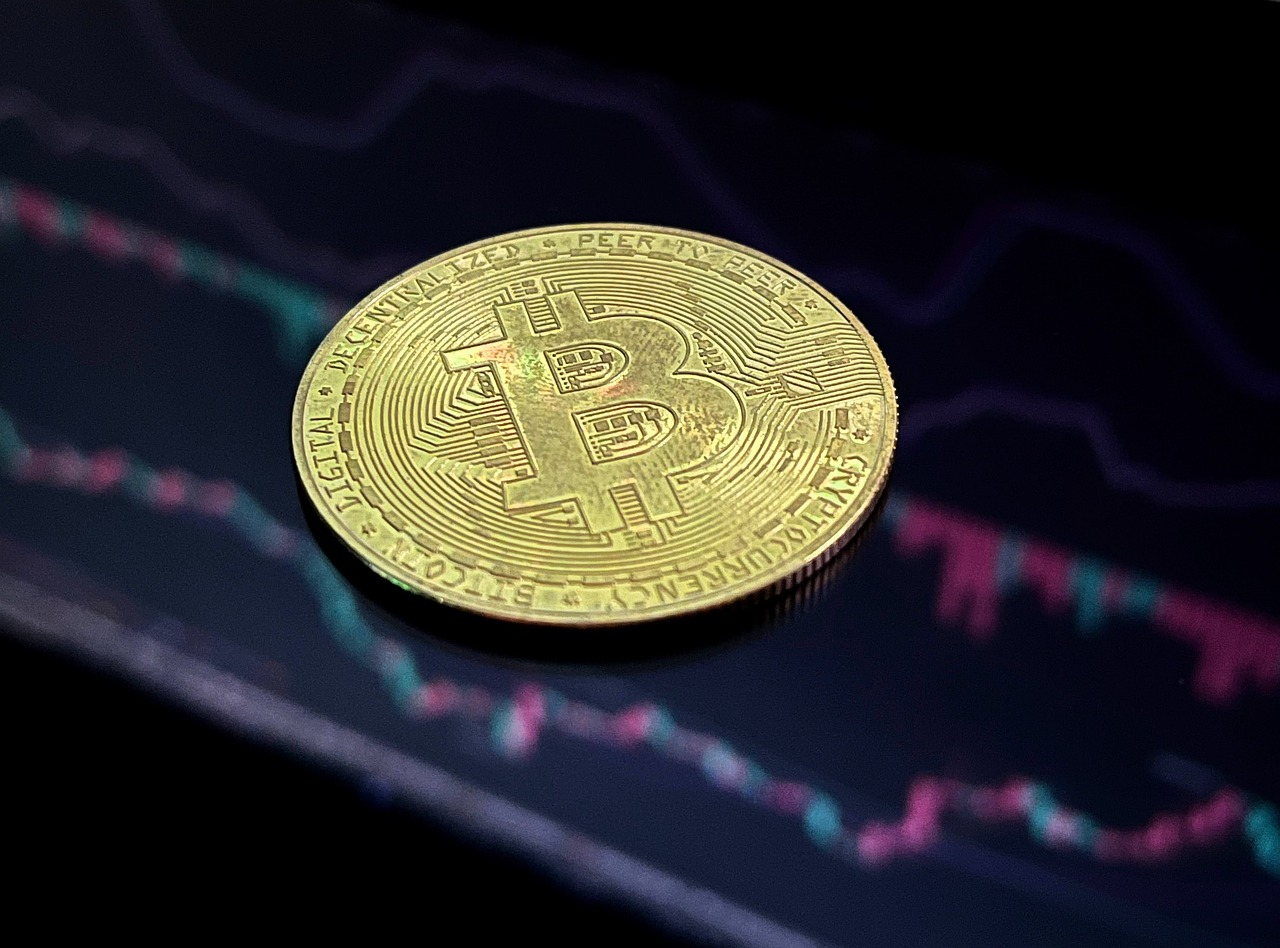
Incentives and Utility
In the ever-evolving landscape of cryptocurrency, incentives and utility are like the fuel that keeps the engine running. They drive user engagement and foster project growth, making them essential components of tokenomics. But what exactly do we mean by incentives and utility? Think of incentives as the carrots that projects dangle in front of users, encouraging them to participate, hold, or use their tokens. Utility, on the other hand, refers to the actual use cases and functionalities that a token provides within its ecosystem.
To illustrate this, consider a popular DeFi (Decentralized Finance) platform. Users are incentivized to provide liquidity through rewards in the form of additional tokens. These rewards not only encourage participation but also help stabilize the platform by ensuring there are sufficient funds available for transactions. The utility of the token is evident as it allows users to engage in lending, borrowing, and trading—all vital functions that add real value to the ecosystem.
Moreover, the design of incentive structures can vary widely. Some projects may opt for staking rewards, where users lock up their tokens in return for interest or additional tokens over time. Others might implement governance tokens that allow holders to vote on key decisions affecting the project, thus giving them a sense of ownership and influence. This not only enhances user engagement but also fosters a strong community around the project.
However, it’s important to strike a balance. Overly generous incentives can lead to a short-term spike in activity but may not ensure long-term sustainability. In contrast, a well-thought-out utility model can create a steady stream of engagement and investment. For instance, projects like Chainlink have successfully integrated their tokens into various applications, providing real-world use cases that keep users coming back.
To wrap it up, incentives and utility are interlinked in a way that can make or break a crypto project. A project that offers robust utility without compelling incentives may struggle to attract users, while one that focuses solely on incentives without a solid utility framework may face issues with sustainability. The key takeaway here is that a healthy balance of both is crucial for fostering a thriving ecosystem that benefits developers and investors alike.
- What are incentives in tokenomics? Incentives are rewards or benefits offered to users to encourage participation in a crypto project.
- How does utility affect a token's value? Utility provides real-world use cases for a token, which can drive demand and, consequently, its value in the market.
- Can a project survive without strong incentives? While it's possible, projects without strong incentives may struggle to build a user base and maintain engagement over time.
- What role do governance tokens play? Governance tokens give holders a voice in decision-making processes, fostering a sense of community and ownership.

Case Studies of Successful Tokenomics
When it comes to understanding the effectiveness of tokenomics, real-world examples can provide invaluable insights. Let's dive into a couple of standout projects that have successfully leveraged tokenomics to achieve their goals and sustain growth. These case studies not only highlight innovative economic models but also showcase how thoughtful design can lead to thriving ecosystems.
One of the most notable examples is Ethereum, which has revolutionized the way we think about smart contracts and decentralized applications (dApps). At the heart of Ethereum's tokenomics is its gas fee structure, which serves as a mechanism to prioritize transactions on the network. Whenever a user wants to execute a transaction or run a smart contract, they must pay a fee in Ether (ETH), which varies based on network demand. This dynamic pricing model ensures that miners are incentivized to process transactions quickly, thus maintaining the network's efficiency. As Ethereum continues to evolve, particularly with the transition to Ethereum 2.0, the implications of its gas fee structure become even more significant, impacting everything from user experience to network scalability.
In addition to Ethereum, another exemplary case is the Binance Smart Chain (BSC). Launched by Binance, BSC has attracted a plethora of projects looking for a more affordable alternative to Ethereum. The tokenomics of BSC is particularly interesting due to its dual-chain architecture, allowing users to transfer assets between Binance Chain and Binance Smart Chain seamlessly. BSC employs a unique token model where the native token, BNB, is used for transaction fees, staking, and participating in token sales on the Binance Launchpad. This multifaceted utility of BNB not only drives demand but also encourages user engagement, creating a vibrant ecosystem that supports rapid growth.
To further illustrate the success of these tokenomics models, let's take a look at the following table, which summarizes key aspects of Ethereum and Binance Smart Chain:
| Project | Token | Key Features | Impact on Ecosystem |
|---|---|---|---|
| Ethereum | ETH | Gas fee structure, Smart contracts | Enables dApps, Prioritizes transactions |
| Binance Smart Chain | BNB | Dual-chain architecture, Low fees | Supports diverse projects, Encourages staking |
Both Ethereum and Binance Smart Chain exemplify how effective tokenomics can lead to a thriving ecosystem. Ethereum’s gas fees ensure that the network remains efficient, while BSC’s utility of BNB fosters a robust community of developers and users. These projects illustrate that when tokenomics is designed with purpose and clarity, it can significantly enhance user engagement and project growth.
However, it’s essential to remember that while these case studies showcase success, they also come with their challenges. As the crypto landscape continues to evolve, projects must remain adaptable and responsive to market changes. The future of tokenomics will undoubtedly bring new innovations and lessons learned from these pioneering projects, paving the way for the next generation of cryptocurrencies.
- What is tokenomics? Tokenomics refers to the economic model of a cryptocurrency, including its supply, distribution, and incentives.
- Why is tokenomics important? It shapes the success and sustainability of a cryptocurrency project, influencing investor confidence and community engagement.
- Can tokenomics change over time? Yes, many projects adapt their tokenomics in response to market conditions and user feedback to enhance their ecosystem.
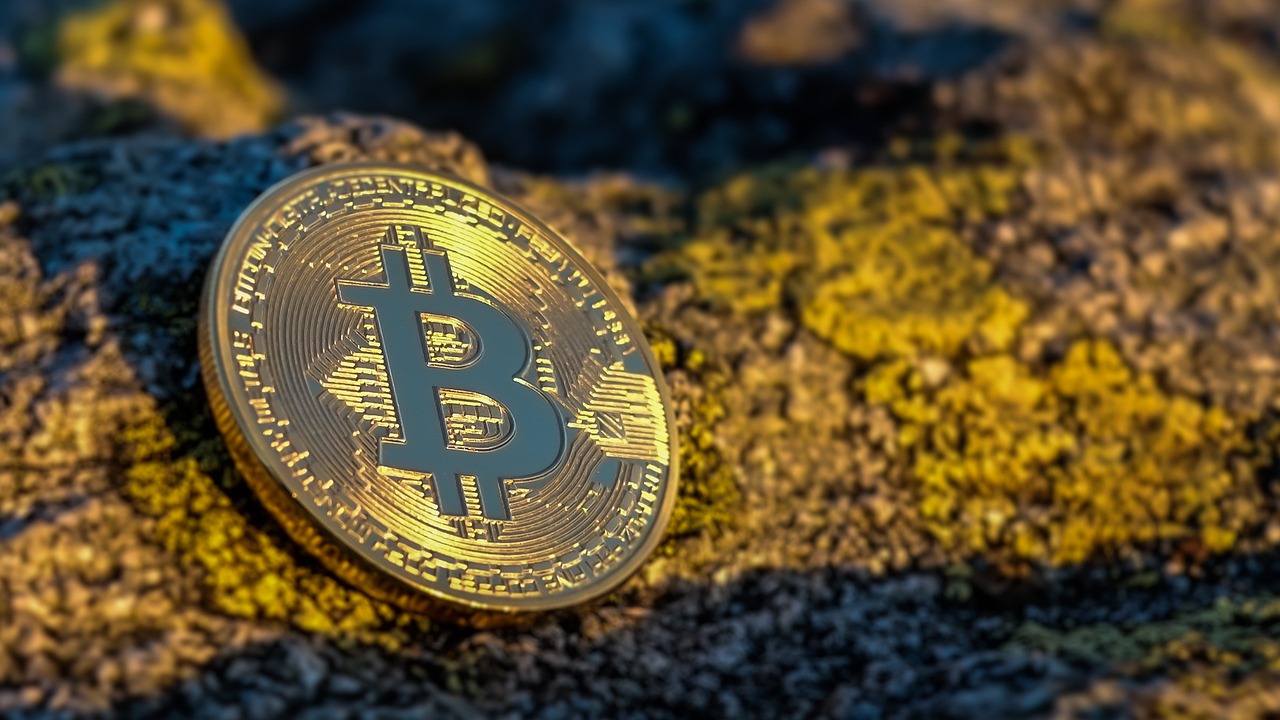
Ethereum's Gas Fees
Ethereum's gas fees are a fundamental aspect of its ecosystem, acting like the fuel that powers transactions and smart contracts on the network. Just imagine trying to drive a car without gas; similarly, without gas fees, Ethereum wouldn't function effectively. Gas fees are essentially the costs associated with executing operations on the Ethereum blockchain, and they vary based on network demand. When the network is congested, fees can skyrocket, making transactions expensive and sometimes impractical for users. This dynamic creates a fascinating interplay between supply and demand, impacting not just individual users but the entire Ethereum ecosystem.
To put it simply, gas fees are measured in "gwei," which is a denomination of Ether (ETH). One gwei equals 0.000000001 ETH. Users must pay a certain amount of gwei to miners as an incentive for them to process their transactions. The total gas fee is calculated by multiplying the gas limit (the maximum amount of gas the user is willing to spend) by the gas price (the amount of gwei per unit of gas). Here’s a quick breakdown of the formula:
| Component | Description |
|---|---|
| Gas Limit | The maximum amount of gas you are willing to use for a transaction. |
| Gas Price | The amount of gwei you are willing to pay per unit of gas. |
| Total Gas Fee | Calculated as Gas Limit x Gas Price. |
The fluctuating nature of gas fees can lead to frustration among users, especially during peak times when fees can reach exorbitant levels. For instance, during the DeFi boom or NFT craze, users have reported gas fees soaring to hundreds of dollars, which can deter smaller investors from participating. However, these fees also serve a purpose; they help prevent spam attacks on the network and ensure that miners are compensated for their work. In essence, gas fees maintain the integrity of the Ethereum network.
Furthermore, Ethereum is actively working on solutions to mitigate high gas fees. The transition to Ethereum 2.0, which includes the implementation of proof-of-stake (PoS) consensus, is expected to improve scalability and reduce fees significantly. Until then, users can employ various strategies to minimize gas costs, such as timing their transactions during off-peak hours or using layer-2 solutions that offer quicker and cheaper transactions.
In conclusion, understanding Ethereum's gas fees is crucial for anyone looking to navigate the ecosystem effectively. While they can be a barrier at times, they also play a vital role in ensuring the network operates smoothly. As Ethereum continues to evolve, the hope is that gas fees will become more manageable, allowing for a more inclusive and accessible platform for all users.
- What are gas fees in Ethereum? Gas fees are the costs associated with executing transactions and smart contracts on the Ethereum blockchain, measured in gwei.
- Why do gas fees fluctuate? Gas fees fluctuate based on network demand; during high traffic periods, fees can increase significantly.
- How can I reduce my gas fees? You can reduce gas fees by timing your transactions during off-peak hours or utilizing layer-2 solutions.
- What is the relationship between gas limit and gas price? The total gas fee is determined by multiplying the gas limit (maximum gas you’re willing to use) by the gas price (amount of gwei per unit of gas).
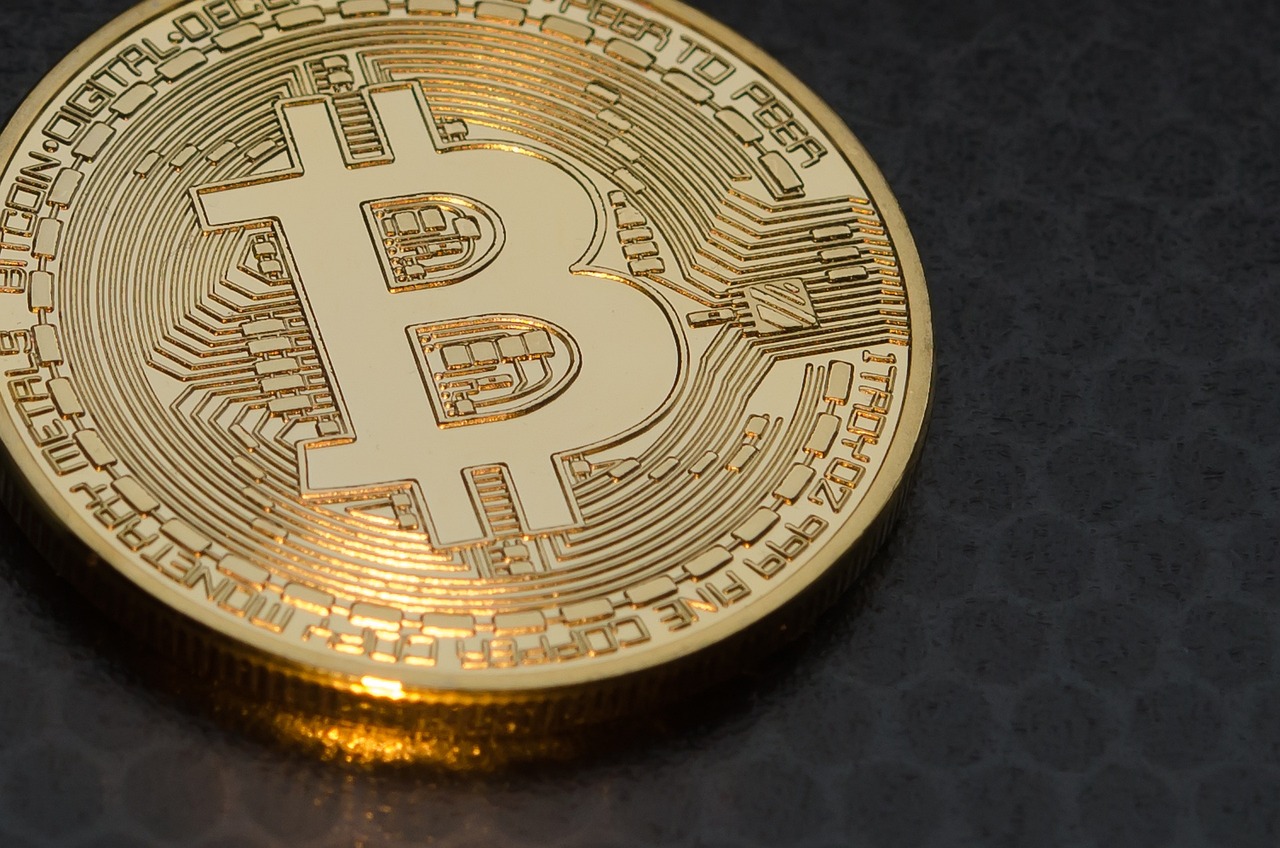
Binance Smart Chain's Token Model
Binance Smart Chain (BSC) has emerged as a powerful player in the cryptocurrency landscape, primarily due to its innovative and effective token model. Unlike Ethereum, which has faced scalability issues, BSC offers a solution that combines speed, low transaction fees, and a robust ecosystem. At the heart of this success is its native token, BNB (Binance Coin), which serves multiple purposes and fuels the entire BSC ecosystem.
One of the most compelling aspects of BSC's token model is its dual utility. BNB is not only used for transaction fees on the Binance Smart Chain but also plays a significant role in the Binance exchange itself. Users can leverage BNB to pay for trading fees, which results in discounts, thus incentivizing its use. This dual functionality creates a strong demand for the token, which is crucial for its value proposition.
Moreover, BSC employs a proof-of-staked authority (PoSA)
Another key feature of BSC's token model is its burn mechanism. Binance periodically conducts token burns, reducing the total supply of BNB. This deflationary aspect creates a sense of scarcity, which can lead to an increase in value over time. The most recent burn, which occurred quarterly, has made waves in the community, as it directly impacts the token's supply and perceived value. To illustrate the impact of these elements, consider the following table that summarizes the key features of Binance Smart Chain's token model: In conclusion, Binance Smart Chain's token model is a shining example of how effective tokenomics can drive the success of a cryptocurrency project. By integrating utility, innovative consensus mechanisms, and deflationary strategies, BSC has not only created a thriving ecosystem but also established a strong foundation for future growth. Investors and developers alike can learn valuable lessons from BSC's approach to tokenomics, making it a case study worth exploring. Binance Smart Chain is a blockchain network that runs in parallel to the Binance Chain. It allows for the creation of smart contracts and decentralized applications (dApps). BSC offers faster transaction times and lower fees compared to Ethereum, making it more accessible for users and developers. BNB is the native token of Binance Smart Chain, used for transaction fees, trading discounts, and other utilities within the Binance ecosystem. The burn mechanism involves periodically removing a portion of BNB from circulation, which can help increase its value over time. While tokenomics is a powerful tool that can significantly influence the success of cryptocurrency projects, it is not without its challenges. Understanding these challenges is crucial for both developers and investors who want to navigate the complex landscape of digital currencies effectively. One of the primary issues is market volatility. The crypto market is notorious for its price swings, and this volatility can severely impact the perceived value of tokens. For instance, a sudden drop in demand can lead to a rapid decrease in token value, shaking investor confidence and potentially leading to a sell-off. Another significant challenge is the misalignment of incentives. In many projects, the incentives designed to encourage user participation and investment can sometimes backfire. For example, if the rewards for holding a token are not attractive enough, users may opt to sell instead, leading to a decline in token value. Developers must carefully design incentive structures that align the interests of all stakeholders, including investors, developers, and end-users. Moreover, regulatory uncertainty poses a considerable risk to tokenomics. As governments around the world grapple with how to regulate cryptocurrencies, projects can find themselves in a precarious position. A sudden regulatory change can affect token supply, trading practices, and even the overall viability of a project. This uncertainty can deter potential investors, as they may be hesitant to commit to a project that could face legal challenges. Additionally, security vulnerabilities are a persistent concern in the crypto space. Tokenomics often relies on smart contracts, which are susceptible to bugs and hacks. A compromised smart contract can lead to significant losses for investors and tarnish the reputation of the project. Developers must prioritize security to build trust within their communities and ensure the long-term sustainability of their tokens. Finally, the challenge of user adoption cannot be overlooked. Even with a well-designed tokenomics model, a project may struggle to gain traction if it fails to attract a user base. Developers need to focus on marketing and community engagement strategies to promote their tokens effectively. Without a solid user base, even the most innovative tokenomics can falter. In summary, while tokenomics is a critical component of cryptocurrency projects, it comes with its own set of challenges. Market volatility, misaligned incentives, regulatory uncertainty, security vulnerabilities, and user adoption are all factors that can impact the success of a token. Developers and investors alike must remain vigilant and proactive in addressing these challenges to realize the full potential of tokenomics. Tokenomics is the study of the economic model behind a cryptocurrency. It encompasses various factors such as supply, distribution, and incentives, which play a crucial role in determining the success and sustainability of a crypto project. The dynamics of supply and demand are fundamental in establishing a token's value. When demand exceeds supply, prices typically rise, while an oversupply can lead to price drops. Understanding these interactions helps investors make informed decisions. Token supply mechanisms can include fixed supply, inflationary models, and deflationary models. Each approach influences the availability of tokens and can impact investor confidence and the longevity of a project. Inflationary tokens increase in supply over time, which can dilute value, while deflationary tokens decrease in supply, potentially increasing value. Knowing these differences helps investors assess risks and rewards associated with each type. Token burn strategies involve permanently removing tokens from circulation to reduce supply. This can create scarcity and potentially increase the token's value, making it an attractive feature for investors. Incentives are vital as they encourage user engagement and project growth. Effective incentive structures can foster community participation, which is essential for the sustainability of any cryptocurrency project. Ethereum's gas fee structure is a great example of successful tokenomics. It not only ensures network usability but also incentivizes users to participate in transactions, contributing to the overall growth of the Ethereum ecosystem. Tokenomics can encounter several challenges, including poor design, lack of transparency, and market manipulation. These pitfalls can undermine the effectiveness of token models and affect the project's success.
Feature
Description
Native Token
BNB (Binance Coin) used for transaction fees and trading discounts.
Consensus Mechanism
Proof-of-Staked Authority (PoSA) for fast transactions and low fees.
Burn Mechanism
Regular token burns to reduce supply and increase scarcity.
Developer Incentives
Low entry barriers for new projects, fostering a robust dApp ecosystem.
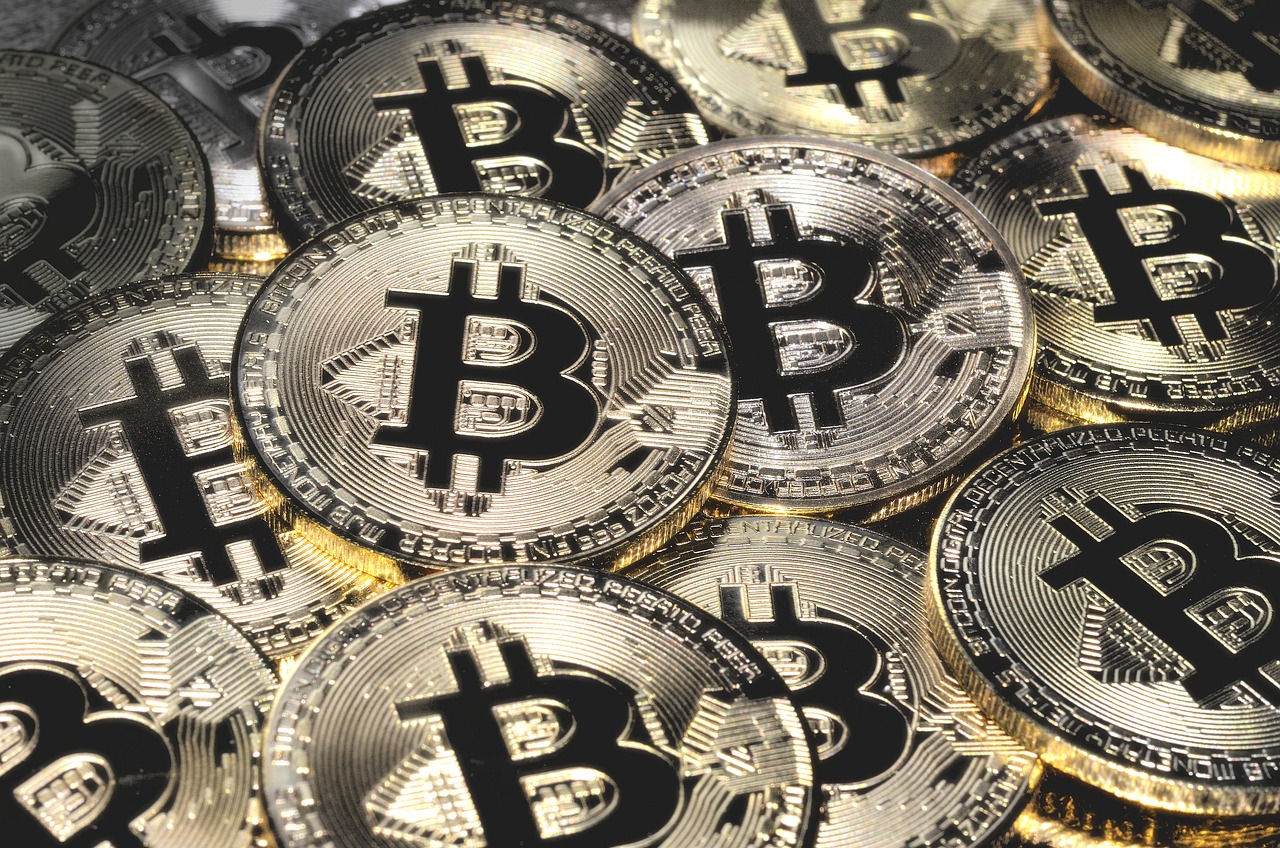
Challenges in Tokenomics
Frequently Asked Questions

